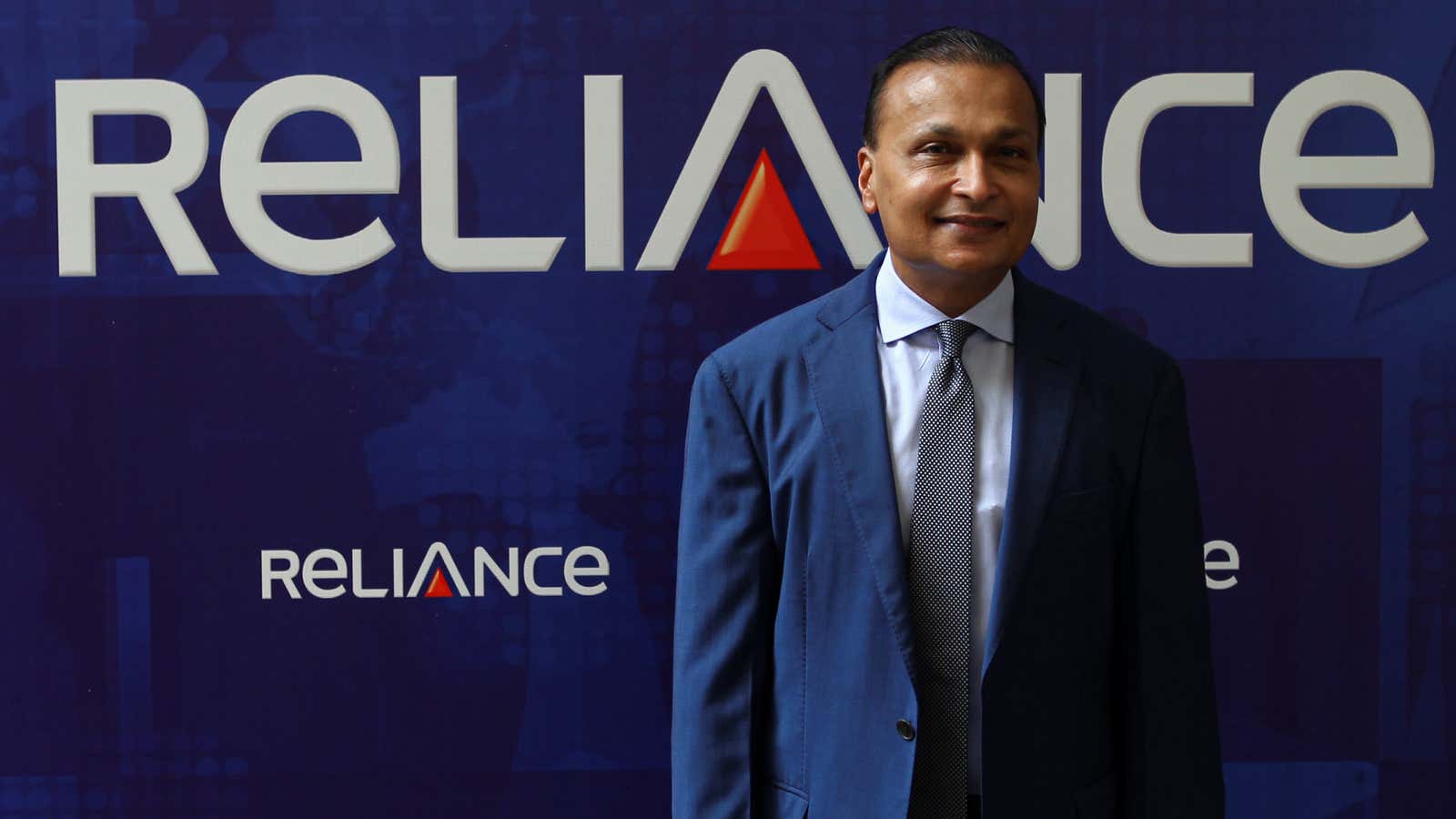Anil Ambani‘s good old days are unlikely to return anytime soon.
The “penniless” younger brother of Asia’s richest man Mukesh Ambani, last week resigned as director of Reliance Power and Reliance Infrastructure, after the Securities and Exchange Board of India’s order (Sebi) prohibited him from associating with any listed company.
These two companies are among the many crisis-ridden ones under the former billionaire’s Reliance Anil Dhirubhai Ambani Group (ADAG).
Why did Sebi bar Anil Ambani?
In February, the market watchdog barred Reliance Home Finance (RHFL) and Anil Ambani, its promoter, along with three others, from the securities market for allegedly siphoning company funds.
It also acted upon several banks’ complaints of their lendings to ADAG firms being partly used to repay other ADAG subsidiaries’ loans. These companies with weak financials were allegedly being used as conduits to divert funds from RHFL to ADAG firms.
Besides the securities market ban, Sebi restrained Anil Ambani from associating with any intermediary registered with it or with any listed public company. Till further orders, he isn’t allowed to act as director/promoter of any public company that intends to raise money from the market.
The falling fortune of Anil Ambani
Once the world’s sixth-richest billionaire with $42 billion in assets, Anil Ambani declared himself a pauper to Chinese banks in 2020, while also informing a UK court that his net worth had become zero.
Over the years, his wealth disappeared steadily, though not so slowly. For instance, by 2011, Ambani’s net worth decreased to $8.8 billion. It was also the time he faced charges of dubious 2G transactions.
“Anil Ambani’s investments were worth more than $7 billion in 2012, they are now worth $89 million, and his net worth is zero once his liabilities are taken into account…Quite simply, he was a wealthy businessman, now he is not,” his lawyer told a UK court in 2020.
In the meantime, his companies kept turning into loss-making entities and accumulating huge debts.
What’s next for Reliance Power and Reliance Infra?
The two companies’ boards of directors, in separate filings with BSE (pdf), said they aim to become debt-free in the “coming financial year” and reposed full trust in Ambani’s leadership. In India, the financial year starts on April 1 and ends on March 31.
A retired civil servant, Rahul Sarin, has been appointed as an additional but independent director on the boards of Reliance Infrastructure and Reliance Power.
Sarin has been inducted for a five-year term to Reliance Power and Reliance Infrastructure.
